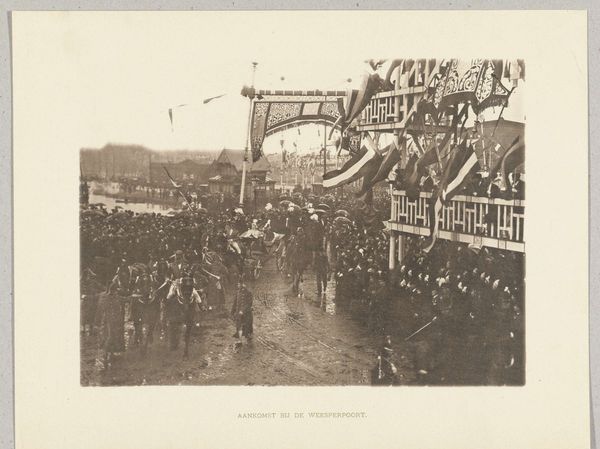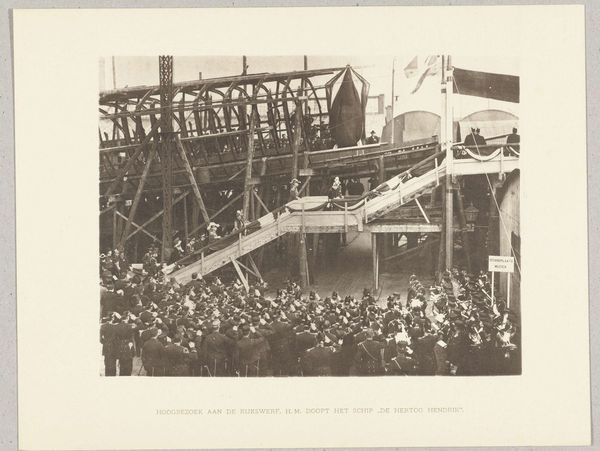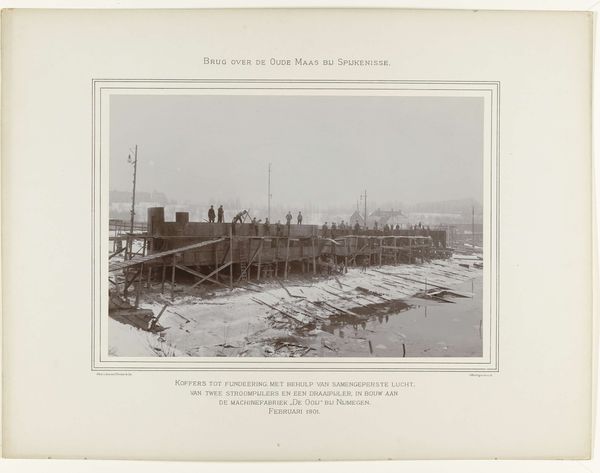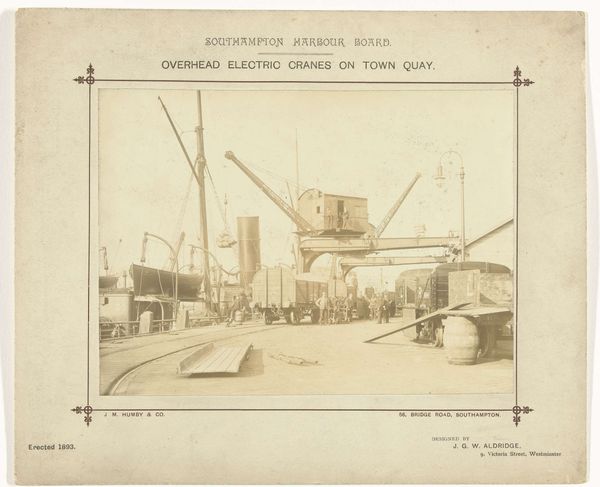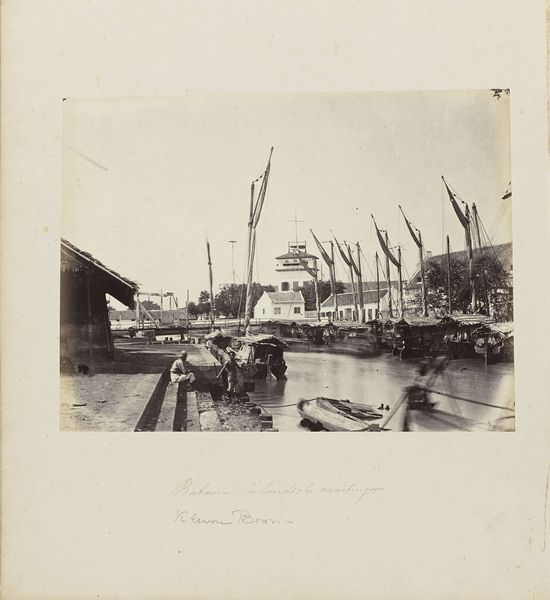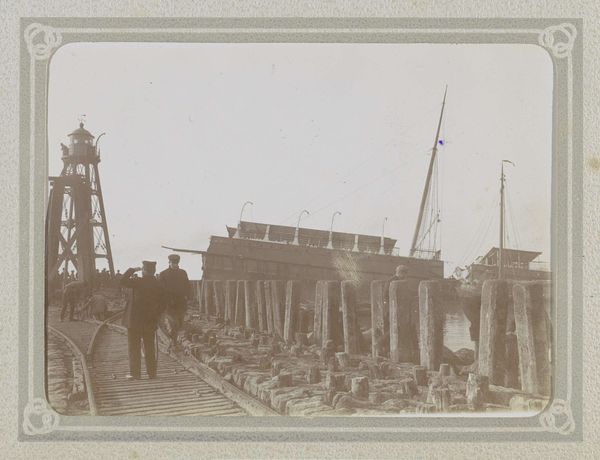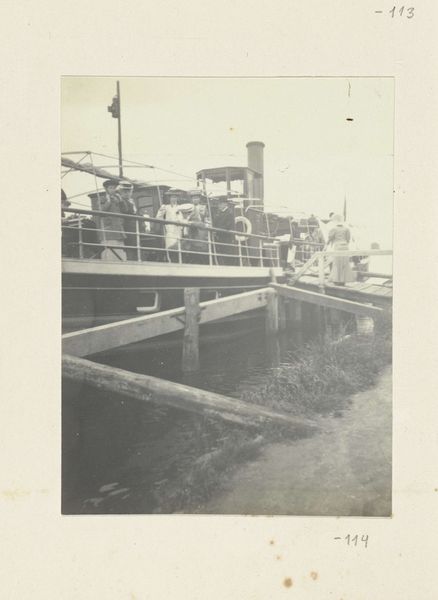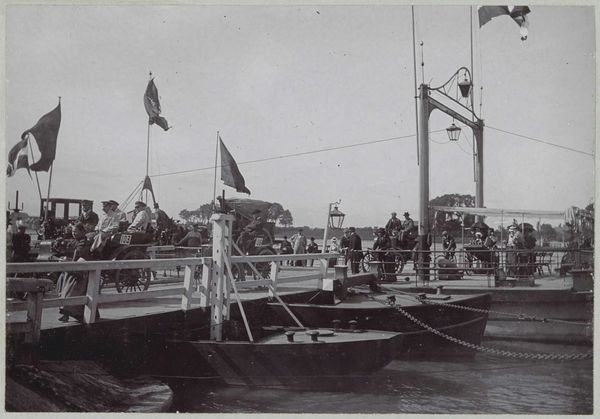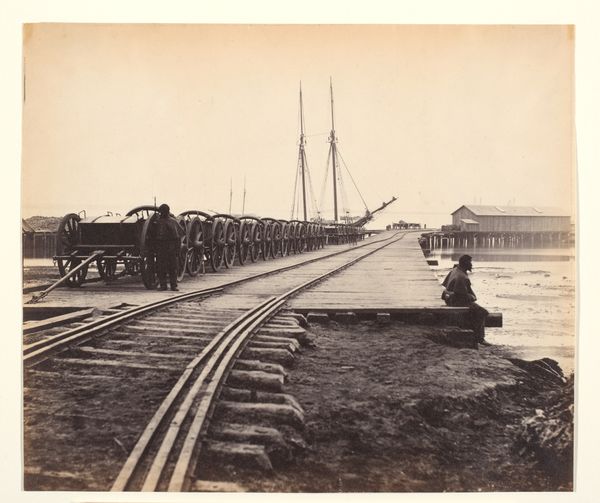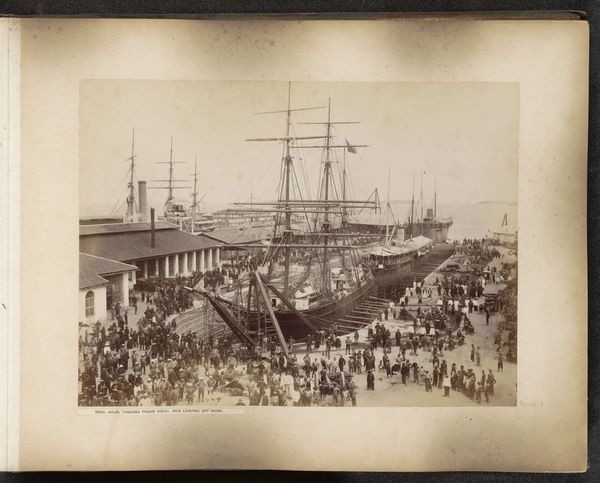
Koningin Wilhelmina en prins Hendrik komen terug van de Rijkswerf in Amsterdam 1901
0:00
0:00
photography, gelatin-silver-print
#
landscape
#
photography
#
gelatin-silver-print
#
realism
Dimensions: height 163 mm, width 215 mm, height 228 mm, width 297 mm
Copyright: Rijks Museum: Open Domain
Curator: It feels almost documentary, this 1901 gelatin silver print entitled "Koningin Wilhelmina en prins Hendrik komen terug van de Rijkswerf in Amsterdam" by Barend Groote. The sepia tone lends it a nostalgic air. Editor: It does have the hallmarks of early photojournalism. My immediate impression is of organised chaos. Look at the sheer number of people crammed into this space; their expectant faces, all focused on a single point. Curator: It's a staged naturalism, capturing Wilhelmina and Hendrik’s return. I'm interested in the carefully arranged layers – the elevated onlookers balanced on precarious scaffolding almost mirror the throngs below, suggesting a stratified society united under royalty. There's this top down approach of looking how royal representation is viewed by different social levels. Editor: And that scaffolding is visually striking, isn't it? It speaks volumes about progress, about construction, quite literally elevating the spectacle for the masses. The Rijkswerf, or Naval Dockyard, was of enormous social and economic importance to Amsterdam and the whole Netherlands at this point in time, so it represents industry but also technological advancements that led the Netherlands towards prosperity. It feels celebratory but restrained. The lack of vibrant color might emphasize formality. Curator: That restraint, though, adds to its psychological depth. Early photographs, like icons, acquire aura by this almost sacred preservation of a bygone moment. The grainy texture and soft focus further romanticize the event, turning what was once a piece of current affairs into an everlasting tableau, symbolizing continuity and legacy. Editor: Absolutely. It underscores the manufactured nature of the image. Think of the power dynamics here. A photograph like this wouldn't just capture the royals returning; it would cement their image in the public consciousness, shaping perceptions of their reign. It also reflects that public interest and that curiosity about political figures are hardly new. It is a visual confirmation for political leaders that media appearances were as essential in the past as they are nowadays. Curator: In some way this captures more than an event, but the cultural need for visual reassurance, creating iconic symbols of leadership that, intentionally or not, shaped generations’ understanding of what royalty means, of national identity, but also power distribution. Editor: Indeed. Looking closely, Groote gives us so much to unpack about that time. The image is a powerful statement about social hierarchies and public perception of power itself. Curator: I agree. Barend Groote provides much more than just a photograph, more of a cultural study around a royal subject and industrial era that defined Holland’s status and identity.
Comments
No comments
Be the first to comment and join the conversation on the ultimate creative platform.
